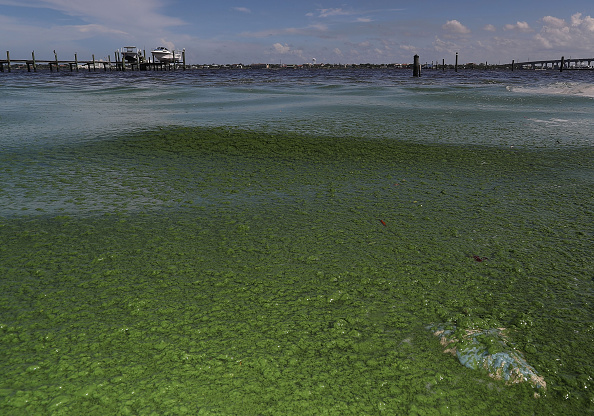Since 2004, Florida beaches have repeatedly experienced terrible toxic algae that have ruined their beautiful coastline. I don’t know about you but I’m sick of it.
Remember the algae blooms of 2013? The event was so severe it became known as ‘Toxic Summer’? Well, 2016’s outbreak “so thoroughly spread through delicate estuaries on both coasts that Florida officials declared a state of emergency in four counties. Toxic sludge has killed fish, shellfish, and at least one manatee and has sickened people who have touched it.” 1
RELATED ARTICLE:
During 2016’s toxic summer, the algae was so thick you could see it from space.
“Blue-green algae, also known as cyanobacteria, occur naturally and thrive in warm, calm water. Two conditions work against eradicating it: climate change and political inertia.
As the climate warms, toxic algae blooms are proliferating worldwide—from eastern China, which has seen some of the largest algae blooms on Earth, to the American West, where sludge covering almost the entire surface of Lake Utah is raising questions about the safety of fruits and vegetables irrigated with algae-infested water.” 2
But it’s not solely the fault of the weather. The sludge that keeps appearing in Florida should also be blamed on political inaction.
The current algae problem in Florida stems from their penchant for dredging and filling, which started a century ago when they began draining the swamp, to create dry real estate they could sell. (I mean, it’s hot like a swamp down here, I think people forget!) Then, you add to that the fact that the politicians, environmentalists, and Big Ag don’t get along and won’t compromise and you’ve got trouble.
RELATED ARTICLES:
The algae on Florida’s beaches don’t originate in the ocean, they come the state’s largest freshwater lake, Okeechobee. At one point the “Everglades extended from Orlando over most of South Florida to the tip of the peninsula, encompassing Lake Okeechobee. Water trickled slowly and continuously south in a broad, shallow sheet that became known as the River of Grass.”3 But, as hundreds of miles of canals were built to siphon water away from the interior, natural flow patterns changed, and that change laid the foundation for many of the environmental problems currently facing South Florida.
Today, Okeechobee is bordered by cattle farms on the north and sugar cane fields on the south, meaning it absorbs agricultural runoff from both directions, and that contributes to the algae growth; the area is broad, shallow, and full of nitrogen and phosphorus from the runoff- the kinds of nutrients that nourish massive algae blooms.
During a normal wet season, Lake Okeechobee can increase two to three feet (especially during seasons like El Niño) and the only way to drain off excess water is to pump billions of gallons to both coasts through canals carved decades ago. Then, all that bloom has to do, to get to the ocean, is pass through the St. Lucie River Estuary and the Indian River Lagoon on the Atlantic coast and the Caloosahatchee River on the Gulf coast.
Boom.
Environmentalists and tourist-dependent businesses would like to see Florida buy land south of the lake and create a storage pond for excess water. (The pond could also serve as a filter to cleanse water before it’s sent into the Everglades.) But with a Governor like Scott, who only works when things benefit him, it feels safe to assume the problem will be with us for a long time still.
I can’t stomach what’s happening to my state, the environment, the animals…we’ve got to keep making noise. Something has to change or we won’t have these beautiful places to live and visit. If you are curious about the current state of algae blooms in the state, click here.
XO- Erin












